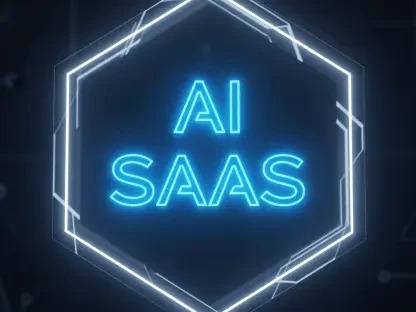The Evolving Landscape of Cybersecurity
In an era where digital infrastructure underpins nearly every facet of global operations, the cybersecurity industry stands as a critical shield against an ever-growing array of threats, with annual damages from cybercrime projected to reach staggering heights. Businesses, governments, and individuals alike depend on robust defenses to safeguard sensitive data and systems from malicious actors who exploit vulnerabilities at an alarming rate. This landscape is marked by rapid evolution, driven by sophisticated attacks like ransomware and state-sponsored hacking, pushing the industry to adapt with innovative solutions.
The cybersecurity sector has witnessed exponential growth in response to these challenges, with key market players investing heavily in advanced technologies such as artificial intelligence to stay ahead of adversaries. Major segments, including penetration testing, vulnerability management, and cloud security, are expanding as organizations migrate to digital environments, necessitating scalable and proactive measures. Emerging technologies, alongside increasing regulatory pressures from data privacy laws, are reshaping strategies and forcing companies to prioritize compliance as much as innovation.
A notable trend is the integration of AI into security frameworks, enabling faster threat detection and response compared to traditional methods. This shift is fueled by the sheer volume of cyber threats, which overwhelm manual processes and demand automation for efficiency. As the industry navigates these dynamics, the balance between technological advancement and regulatory adherence remains a central focus, setting the stage for transformative tools and methodologies.
Unveiling HexStrike AI v6.0: A Game-Changer in Security Automation
Key Innovations and AI Integrations
HexStrike AI v6.0 marks a significant leap in cybersecurity by seamlessly integrating with leading AI models such as ChatGPT, Claude, and GitHub Copilot, empowering conversational interfaces to manage over 150 professional security tools. This pioneering framework enables users to execute complex tasks like network reconnaissance and exploit crafting through simple natural-language prompts, reducing the technical barrier for comprehensive security assessments. Such integration represents a bold step toward making elite capabilities accessible to a wider audience.
At the heart of this innovation lies the Multi-Agent Control Protocol (MCP), a modular system that connects these AI models to specialized tools for diverse operations, spanning web application scanning to cloud security auditing. The platform features over a dozen dedicated AI agents, including the IntelligentDecisionEngine for strategic planning and the CVEIntelligenceManager for real-time vulnerability insights. These agents transform user inputs into intricate attack simulations, ensuring context-aware tool selection and streamlined workflows.
Further enhancing usability, HexStrike AI offers interactive dashboards for real-time progress tracking, complete with visual aids like animated progress bars. This design caters to both technical experts and executive stakeholders, bridging the gap between operational depth and strategic oversight. By automating multi-stage processes, the platform redefines how security tasks are approached, prioritizing efficiency without sacrificing precision.
Performance Metrics and Market Impact
Benchmark data reveals HexStrike AI’s remarkable efficiency, with automated exploit development processes running up to 96 times faster than manual alternatives, a metric that underscores its transformative potential. Such speed improvements are critical in environments where rapid response can mean the difference between containment and catastrophic breach. These gains position the platform as a powerful ally for time-sensitive security operations.
The market implications of this technology are profound, as it democratizes access to high-level cybersecurity capabilities for developers, red teams, and bug bounty hunters who may lack extensive resources. By enabling users to issue straightforward commands for detailed assessments, HexStrike AI levels the playing field, allowing smaller teams to compete with well-funded entities. This shift could redefine industry standards, fostering broader adoption of automated tools.
Looking ahead, trends suggest a growing reliance on automated security assessments, with HexStrike AI poised for significant uptake across diverse sectors. Projections indicate that from this year to 2027, the demand for such solutions will surge as organizations seek to bolster defenses amid escalating threats. This growth trajectory highlights the platform’s potential to become a cornerstone of modern cybersecurity practices.
Challenges in AI-Driven Cybersecurity
Integrating AI into cybersecurity, while promising, presents notable hurdles, particularly in ensuring the accuracy of automated decision-making processes. False positives can lead to wasted resources or overlooked threats, undermining trust in these systems. Addressing this requires rigorous testing and refinement to align AI outputs with real-world scenarios, a task that remains ongoing for many solutions in the field.
Another concern is the risk of over-reliance on AI, where human oversight might be sidelined in critical situations, potentially amplifying errors or misjudgments. Cybersecurity demands a nuanced balance, as automated systems, despite their efficiency, cannot fully replicate human intuition in unpredictable contexts. This dynamic necessitates clear protocols to maintain accountability and intervention when needed.
To mitigate these challenges, strategies such as robust validation mechanisms and continuous updates to AI models are essential for maintaining reliability. Incorporating feedback loops and regular audits of toolsets can further enhance performance, ensuring that platforms like HexStrike AI adapt to evolving threats. These measures aim to build confidence in AI-driven solutions while preserving the critical role of human expertise.
Regulatory and Compliance Considerations
The regulatory landscape for AI in cybersecurity is complex, shaped by stringent data privacy laws and industry standards that govern security testing and data handling. Frameworks like GDPR and CCPA impose strict requirements on how tools process and store information, creating a compliance burden for technology providers. Navigating this terrain is crucial for maintaining operational legitimacy and user trust.
HexStrike AI addresses these demands with built-in features such as Safe Mode, scope validation, and comprehensive audit logging, designed to align with legal and ethical guidelines. These mechanisms ensure that automated processes remain within defined boundaries, minimizing the risk of unauthorized actions or data mishandling. Such proactive compliance tools are vital in an era of heightened scrutiny over digital practices.
Maintaining transparency in automated security operations is equally important, as stakeholders increasingly prioritize accountability amid evolving regulations. By embedding compliance into its core functionality, HexStrike AI fosters trust among users and regulators alike. This focus on ethical standards will likely influence how future innovations in the sector approach governance and responsibility.
The Future of Cybersecurity with AI Integration
The trajectory of AI-driven cybersecurity points toward greater reliance on conversational interfaces and multi-agent systems, which simplify complex operations for diverse users. These advancements promise to make security tools more intuitive, potentially expanding their reach to non-technical professionals in need of robust defenses. This trend could reshape how organizations structure their cybersecurity strategies over the coming years.
Potential disruptors, such as advancements in adversarial AI or shifts in cyber threat patterns, pose challenges that could impact platforms like HexStrike AI, requiring constant adaptation. As attackers leverage AI to craft more sophisticated exploits, defensive systems must evolve in tandem to anticipate and neutralize emerging risks. Staying ahead of these developments will be a defining factor for industry leaders.
Growth areas include broader accessibility for smaller teams and integration with next-generation technologies, influenced by global economic and regulatory shifts. As budgets and policies fluctuate, solutions that offer scalability and compliance will gain traction, enabling even resource-constrained entities to adopt cutting-edge defenses. This democratization of technology heralds a future where cybersecurity is no longer the exclusive domain of large enterprises.
Conclusion
Reflecting on the insights gathered, HexStrike AI has carved a significant path in redefining cybersecurity through its seamless blend of conversational AI and professional security tools. This integration marks a pivotal moment, streamlining intricate tasks and amplifying efficiency across varied user groups. The platform’s impact extends beyond technical innovation, broadening access to advanced capabilities for teams of all sizes.
Looking back, the challenges of accuracy and over-reliance on automation underscore the need for balanced approaches, which HexStrike AI addresses with robust validation and compliance features. As a next step, industry stakeholders should prioritize investment in AI-driven solutions while fostering frameworks that ensure human oversight remains integral. This dual focus promises to sustain trust and efficacy in evolving digital landscapes.
Beyond immediate implications, future considerations point to continuous adaptation against adversarial AI and emerging threats, urging developers to refine tools relentlessly. Collaboration between technologists and regulators also emerges as vital to harmonize innovation with ethical standards. These actionable steps lay a foundation for a resilient cybersecurity ecosystem, poised to tackle tomorrow’s challenges with confidence.









